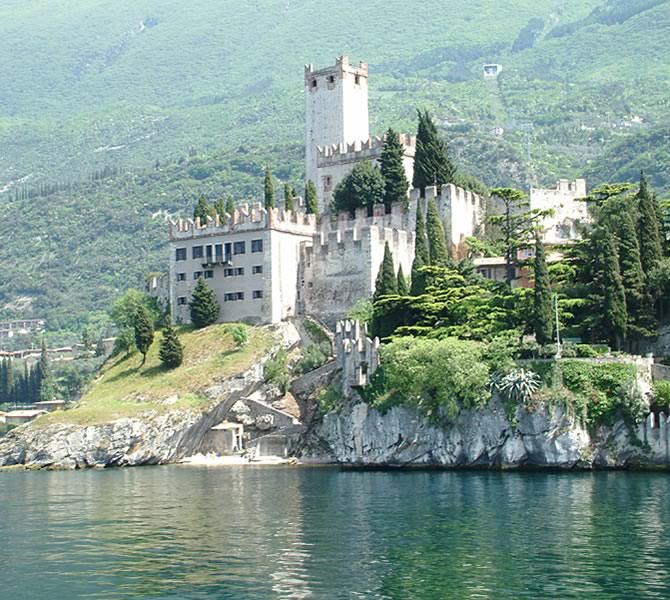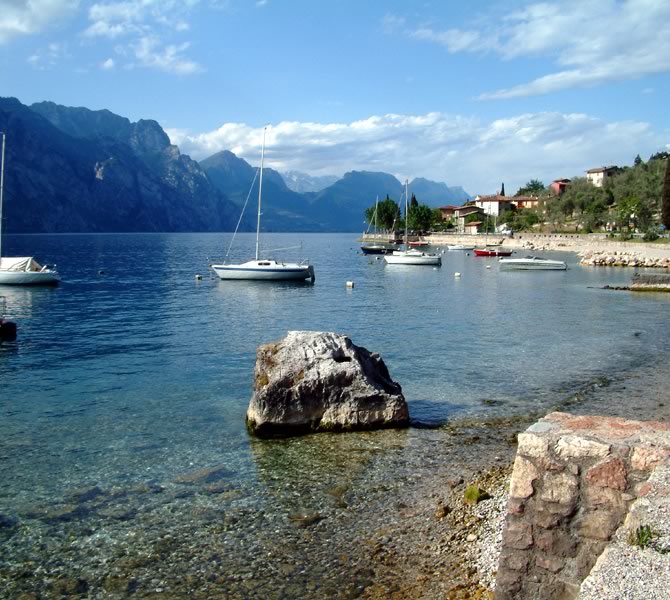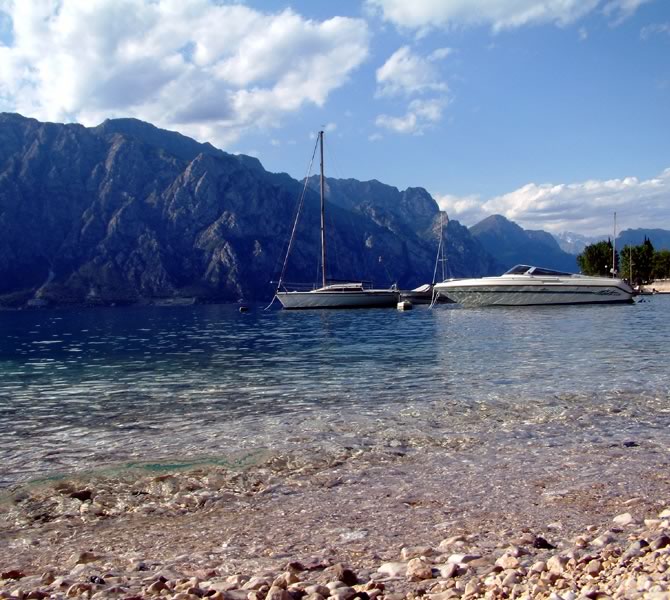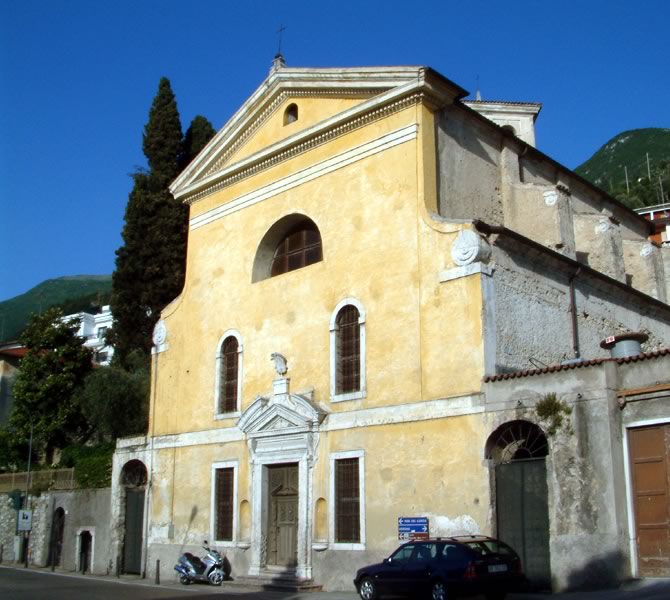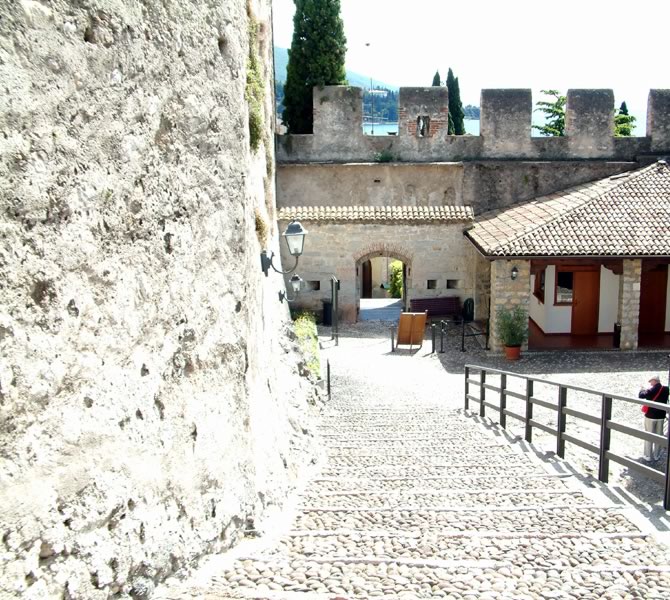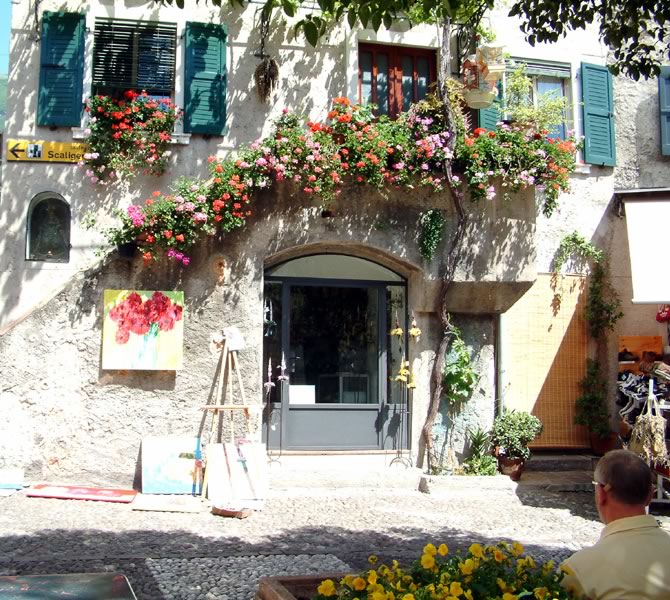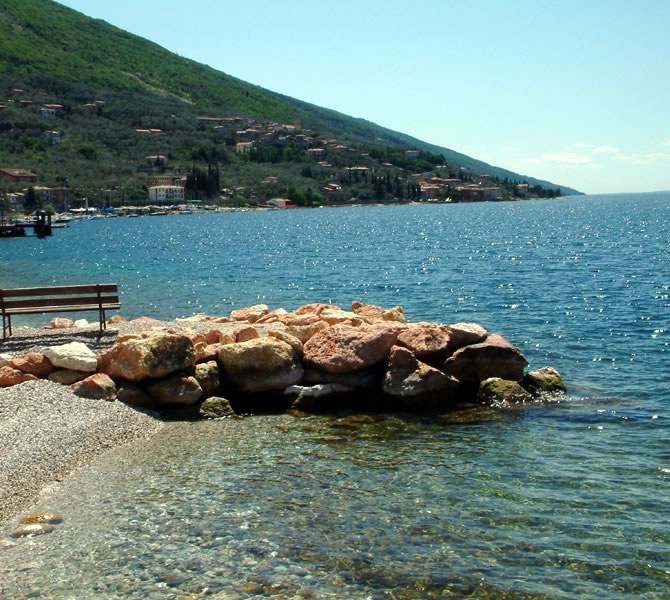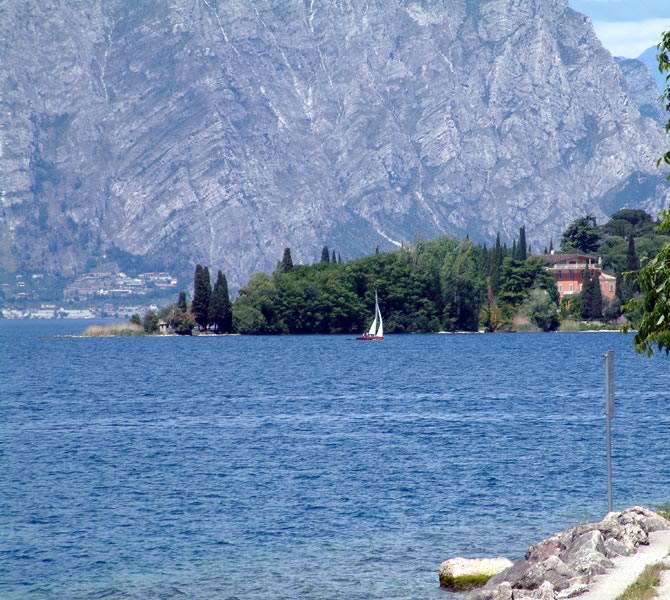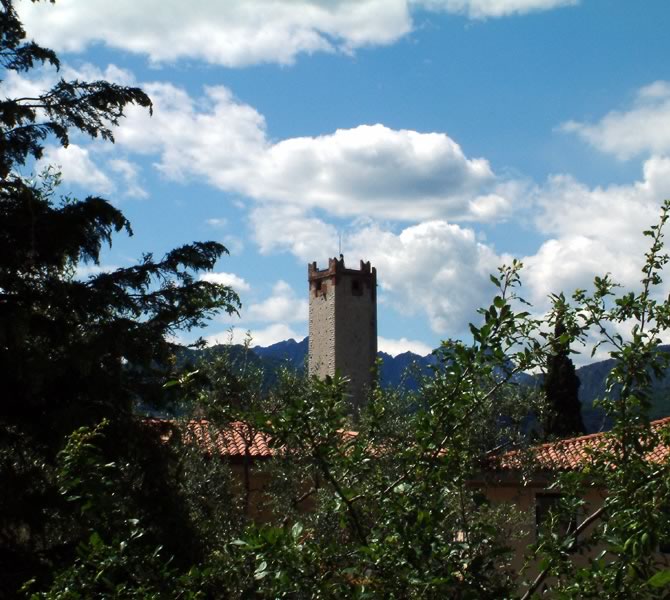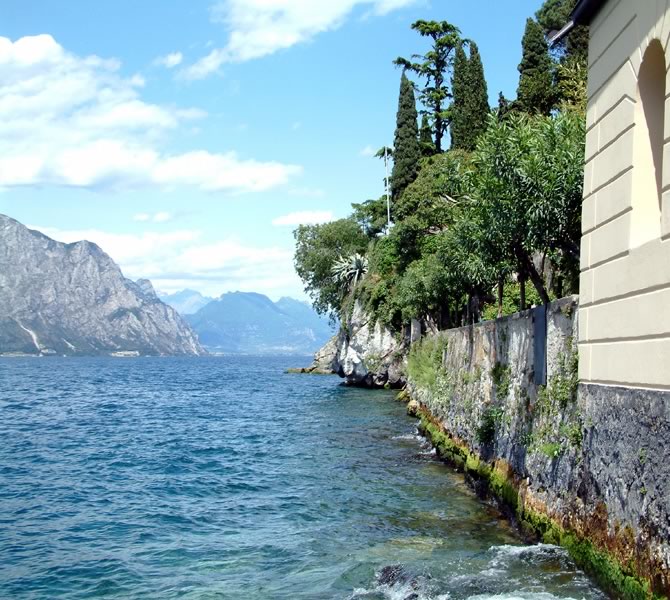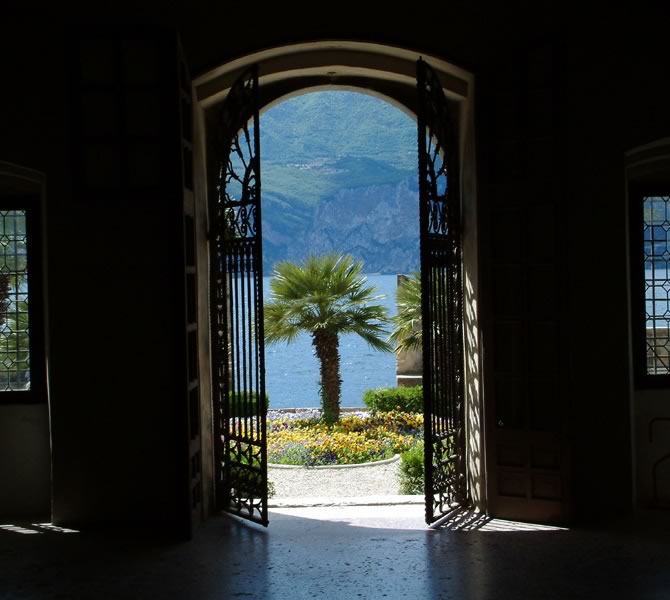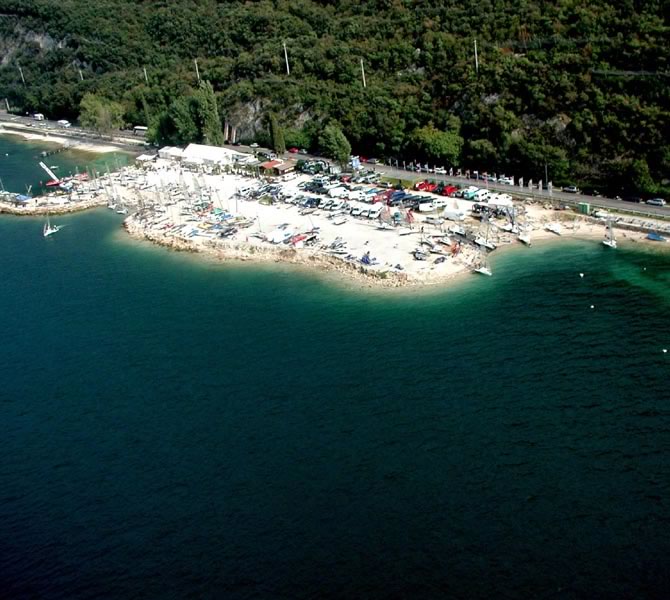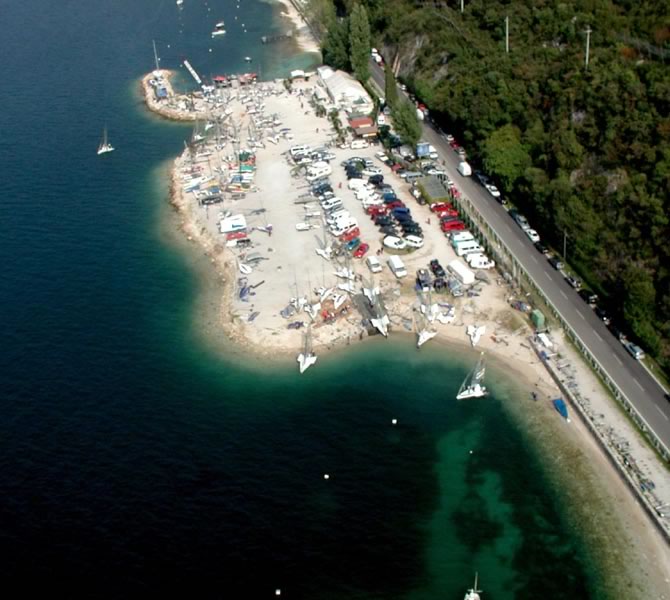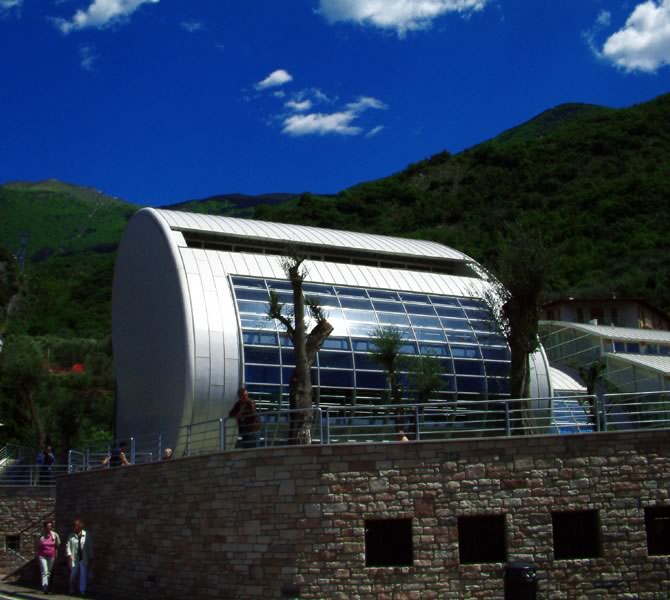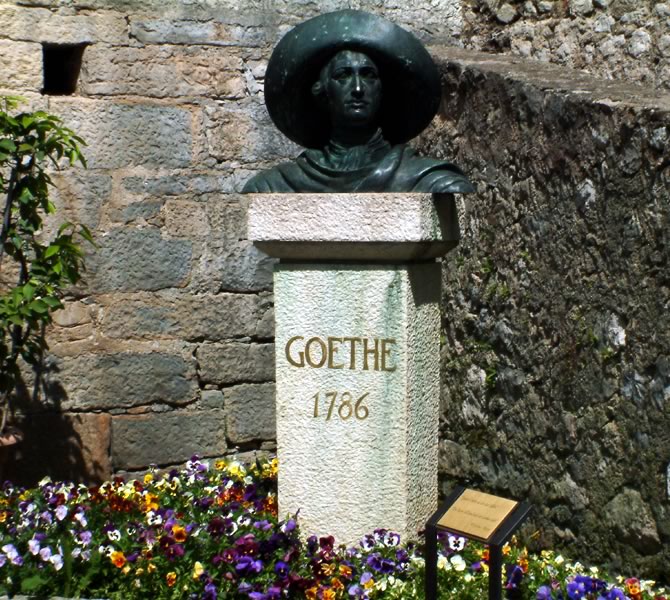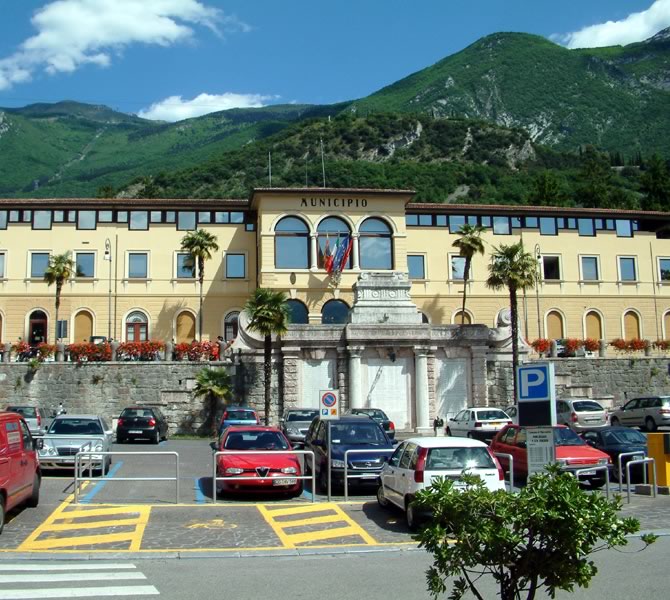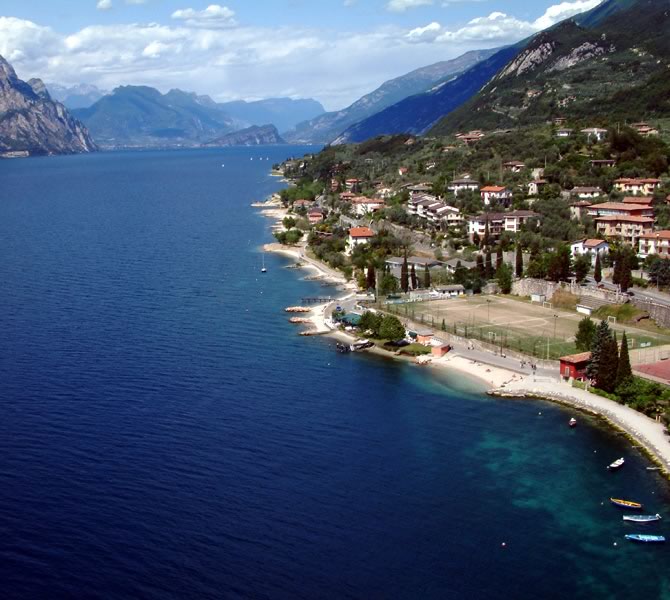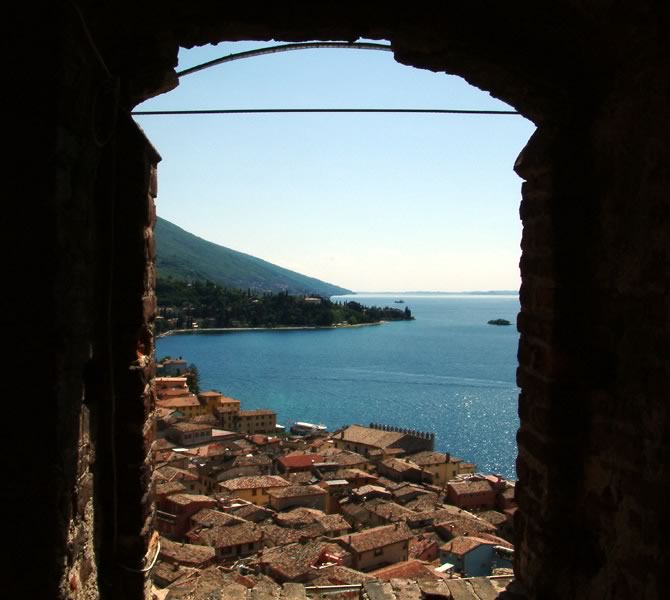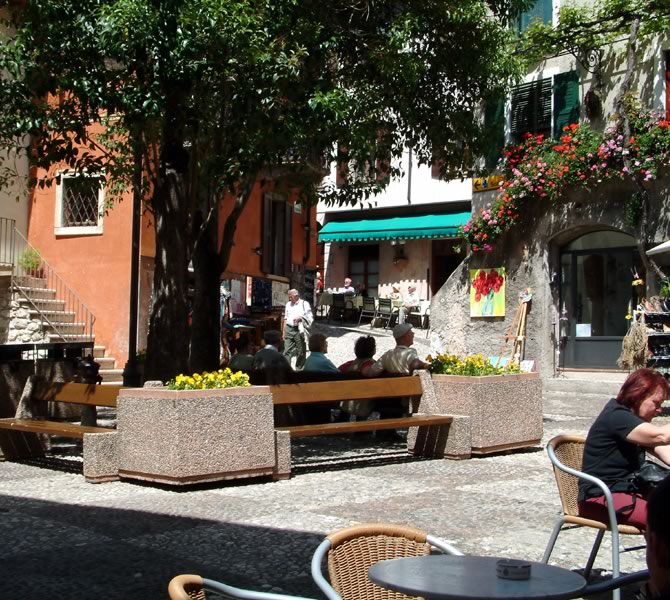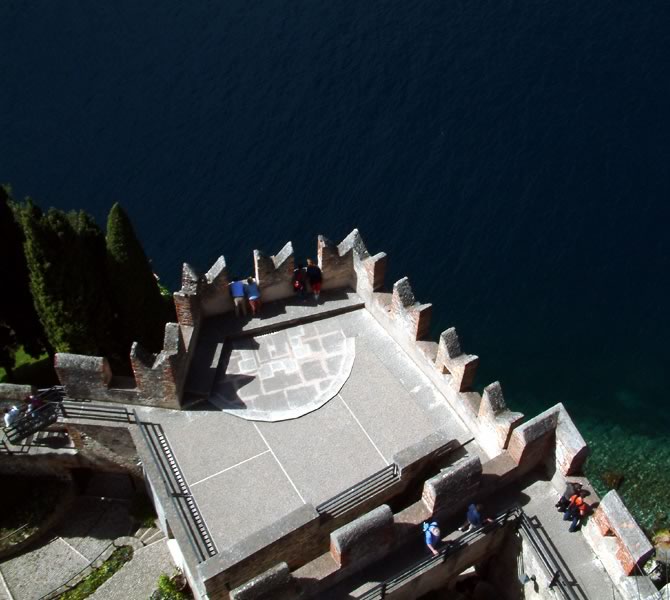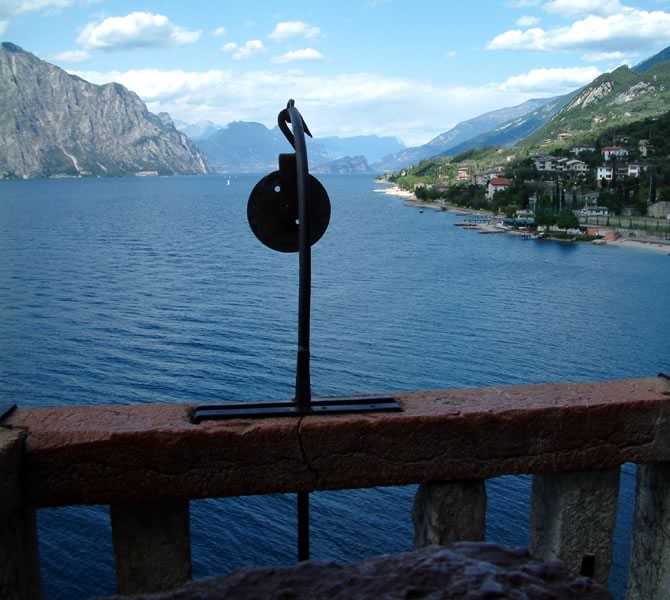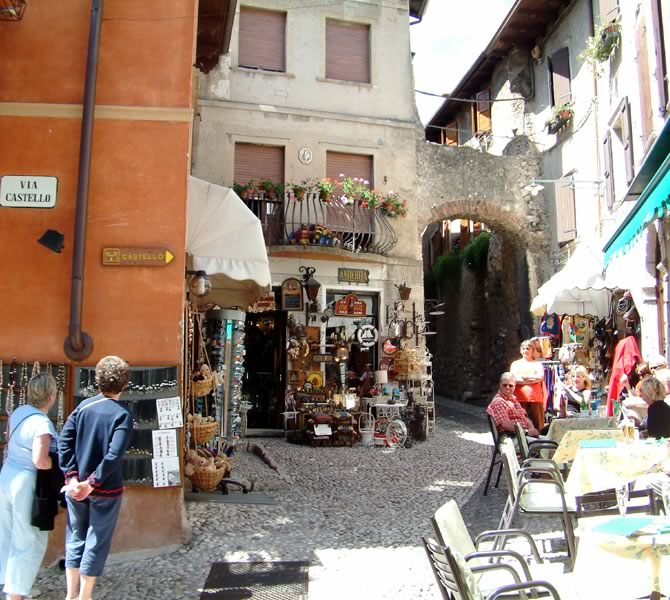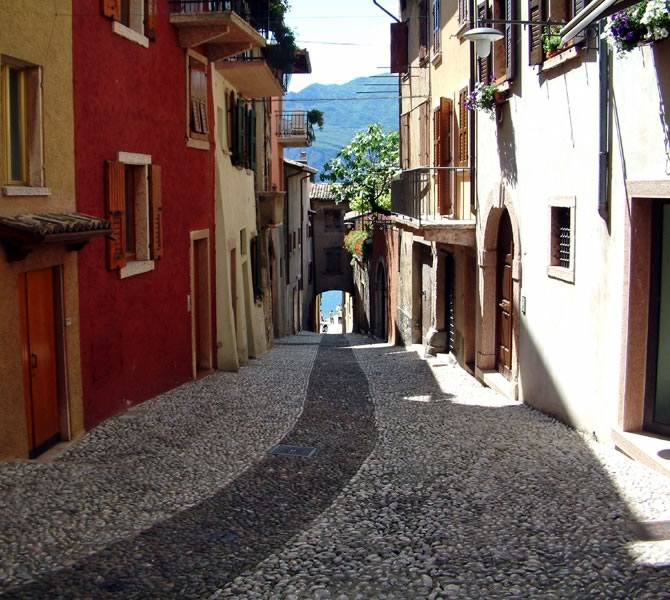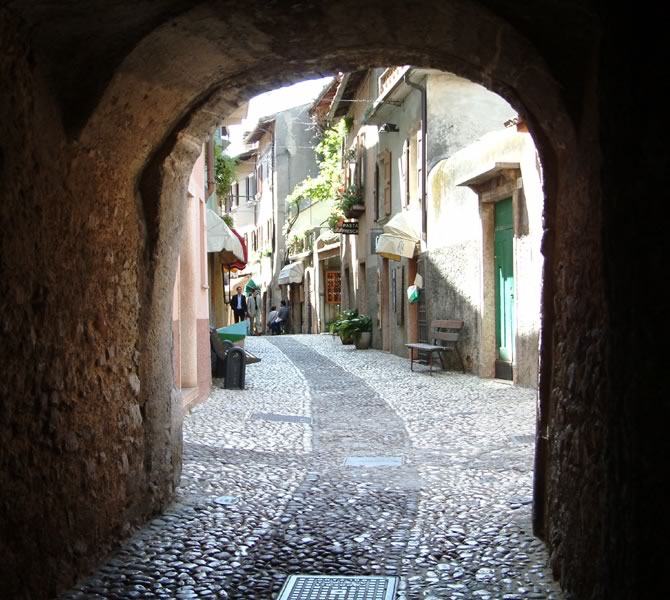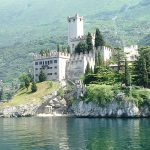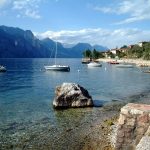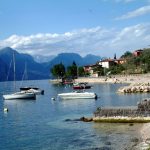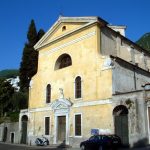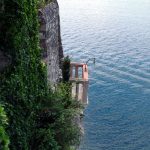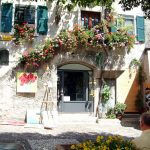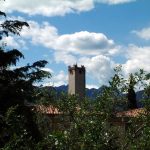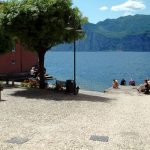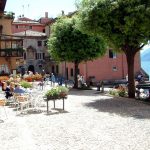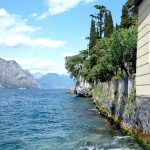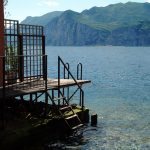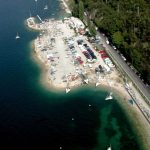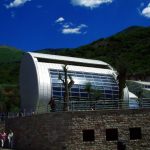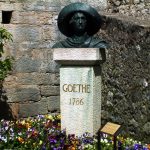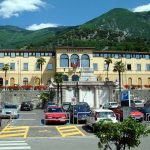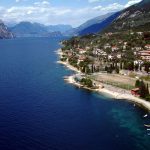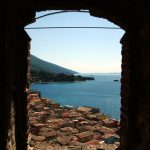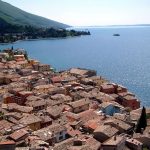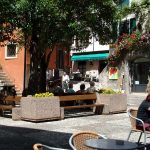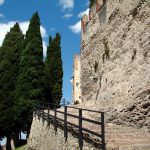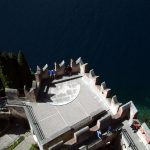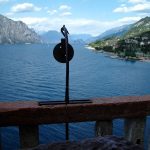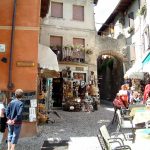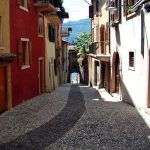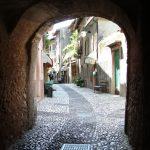Malcesine
HISTORY OF MALCESINE
The town of Malcesine was just inhabited during the Prehistoric epoch. The Romanesque period is testified by three graves of perhaps 3 important commanders. During the Middle Ages the Longobards occupied the landscape in 1586, followed by German troops “Franken“. Then Malcesine took part of the Commune of Verona, it was occupied by the Scaligeri again. Then after the fall of the Republic of Venice, it was under the Austrians, at least Malcesine became part of Italy.
ARTS
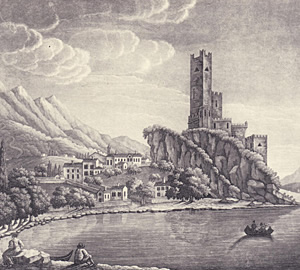 First there is to visit the parish church, consecrated to Santo Stefano. The temple was completely restored in the 18th. century. Inside you can admire a masterpiece by Gerolamo dei Libri (1474 – 1555). In the side chapel there are the two urns of San Benigno e San Caro, with a wonderful painting of the saints on the wall by Felice Boscaretti (1769). There are to find other oil-paintings by Boscaretti in the church, always portrayals of religious personalities. Very precious is the ancient tabernacle of the 14th. century and very interesting “Via crucis” with the 14 single stations of the “suffering” of Jesus Christ, attributes by 4 diverse artists. As a sign of the famous “Quarantore” (a religious tradition, praying 40 hours long) they put up the scaffolding “Triduo” with hundreds of lighted altar candles.The historical centre of Malcesine is marked by numerous tracks of the Middle Ages, there are narrow, looping lanes, typical houses, erected one after the other. Today Malcesine is a health resort and a frequented tourist place, but without changing its romantic, Medieval touch. Not far from the port you can find a little “viuzza“, a really narrow lane, not larger than 110cm, in some points it measures only 55 cm, named “Pica lòf dello strozzo lupo“. Once upon a time there was a hungry wolf, coming down from the mountains into town, searching for something to eat. Passing that lane, he got its body caught and died. They say, that this lane is the most narrow one of the world. The most famous monument of the town is the castle of the Scaligeri, rising on a promontory perpendicularly on the Lake. Quite here the well-known German poet Goethe spent distasteful 15 minutes of his life (1749 – 1832). They tell, that the poet arrived at Malcesine in 1786. Embarking, he was so fascinated of the castle, deciding to draw a sketch of that magic moment. Some of the inhabitants, watching that scenery suspiciously, thought that Goethe must be a spy. Just a few moments later he was arrested and only by help of a man named Gregorio, one time his collaborator in Frankfurt (Germany), by chance saw the poet and recognized him immediately. Goethe was released! In all probability the castle was built for the first time by the Longobards, destroyed by the German “Franken” in 590 and immediately re-established. In 1.277 the castle fell under the Scaligeri, Alberto I della Scala restored and strengthened it completely, including the town walls. Today the castle is a museum, one hall is dedicated to the poet Goethe, other halls keep exhibition objects, typical for these Gardesana and Monte Baldo landscapes. Priceless is the fantastic panoramic view form the top of the highest tower. A narrow lane is running down from the castle, back to the port, with wonderful motor-yachts and sailing-boats. Earlier there anchored here large cargo ships, transporting wood from the hilly forests in other towns. Therefore you can find the Captain’s Palace “Palazzo dei Capitani“, built in 1477 by Alessandro Minisalchi. In 1618 the city of Verona became owner of the building, at the service for the chief captain. (nowadays you can visit only the front part, the seat of the APT and the garden, nearby the lake. On the second floor there is the library). Leaving the town in northern direction, the landscape changes in a rough and wild nature with slopes of Monte Baldo perpendicularly on the lake. They built galleries for passing the rocks…all this together has created a fantastic, picturesque territory. Next to the little hamlet Navene, dominated by the high mountain “Monte altissimo di Nago” you can admire the natural park “Gardesana”, the habitat of the oak-tree. The little church of the hamlet, built in 1659, is consecrated to Santa Maria Romana. The high altar is in baroque stile, inside it keeps 2 masterpieces, one by Brusasorzi, the other one by Guercino.
First there is to visit the parish church, consecrated to Santo Stefano. The temple was completely restored in the 18th. century. Inside you can admire a masterpiece by Gerolamo dei Libri (1474 – 1555). In the side chapel there are the two urns of San Benigno e San Caro, with a wonderful painting of the saints on the wall by Felice Boscaretti (1769). There are to find other oil-paintings by Boscaretti in the church, always portrayals of religious personalities. Very precious is the ancient tabernacle of the 14th. century and very interesting “Via crucis” with the 14 single stations of the “suffering” of Jesus Christ, attributes by 4 diverse artists. As a sign of the famous “Quarantore” (a religious tradition, praying 40 hours long) they put up the scaffolding “Triduo” with hundreds of lighted altar candles.The historical centre of Malcesine is marked by numerous tracks of the Middle Ages, there are narrow, looping lanes, typical houses, erected one after the other. Today Malcesine is a health resort and a frequented tourist place, but without changing its romantic, Medieval touch. Not far from the port you can find a little “viuzza“, a really narrow lane, not larger than 110cm, in some points it measures only 55 cm, named “Pica lòf dello strozzo lupo“. Once upon a time there was a hungry wolf, coming down from the mountains into town, searching for something to eat. Passing that lane, he got its body caught and died. They say, that this lane is the most narrow one of the world. The most famous monument of the town is the castle of the Scaligeri, rising on a promontory perpendicularly on the Lake. Quite here the well-known German poet Goethe spent distasteful 15 minutes of his life (1749 – 1832). They tell, that the poet arrived at Malcesine in 1786. Embarking, he was so fascinated of the castle, deciding to draw a sketch of that magic moment. Some of the inhabitants, watching that scenery suspiciously, thought that Goethe must be a spy. Just a few moments later he was arrested and only by help of a man named Gregorio, one time his collaborator in Frankfurt (Germany), by chance saw the poet and recognized him immediately. Goethe was released! In all probability the castle was built for the first time by the Longobards, destroyed by the German “Franken” in 590 and immediately re-established. In 1.277 the castle fell under the Scaligeri, Alberto I della Scala restored and strengthened it completely, including the town walls. Today the castle is a museum, one hall is dedicated to the poet Goethe, other halls keep exhibition objects, typical for these Gardesana and Monte Baldo landscapes. Priceless is the fantastic panoramic view form the top of the highest tower. A narrow lane is running down from the castle, back to the port, with wonderful motor-yachts and sailing-boats. Earlier there anchored here large cargo ships, transporting wood from the hilly forests in other towns. Therefore you can find the Captain’s Palace “Palazzo dei Capitani“, built in 1477 by Alessandro Minisalchi. In 1618 the city of Verona became owner of the building, at the service for the chief captain. (nowadays you can visit only the front part, the seat of the APT and the garden, nearby the lake. On the second floor there is the library). Leaving the town in northern direction, the landscape changes in a rough and wild nature with slopes of Monte Baldo perpendicularly on the lake. They built galleries for passing the rocks…all this together has created a fantastic, picturesque territory. Next to the little hamlet Navene, dominated by the high mountain “Monte altissimo di Nago” you can admire the natural park “Gardesana”, the habitat of the oak-tree. The little church of the hamlet, built in 1659, is consecrated to Santa Maria Romana. The high altar is in baroque stile, inside it keeps 2 masterpieces, one by Brusasorzi, the other one by Guercino.
ATTRACTIONS
The peak of Monte Baldo is available by cableway, realized for the first time in 1950. Starting from an altitude of 100m it carries in a short time 2 stops only up to 1760m, from a mediterranean climate in height showing unforgettable panoramas. Last stop is at “Tratto Spino“. There you can hike to Monte Altissimo (altitude 2.079m), passing the summit of Monte Baldo reaching finally Costabella and Naole. Nearby the cableway there are ski-tracks, famous for their wonderful panoramic views. Attraction “online” is the new panoramic cableway with turn-cabins, where you can admire the beauty of Lake Garda in a circle of 360 degrees.The little district Cassone is famous for its brook ARIL, the world’s shortest river, it is only 173m long and runs directly into Lake Garda. The parish church stands on the mountainous part of the hamlet and is consecrated to San Benigno and San Caro. At the entrance you can find the statues of the two saints. The temple was finished in 1761. Quite nearby there is the ancient church of 1491and its church square. Here starts a narrow lane up to the hermitage of the two saints San Benigno e San Caro *, living here in the 8th-9th. century.
The Eremitages
In the landscapes of Lake Garda we can find several hermitages, one of those “San Benigno and San Caro”. The two hermits built their hut in an altitude of 834m, far away from habitations and people. There are various legends about these good friars, mixing up fantasy with reality. But a handwriting manuscript of 1807, well preserved in the main library of Verona, describes the following facts: The bishop Rataldo and the German King Pipino decided to transfer the corpse of San Zeno from the ancient church into the new basilica, sending two ambassadors on Monte Baldo looking for Benigno and Caro. Benigno agreed to execute that religious act. On the long way to Verona, at the foot of the valley, he met a blackbird (it was the devil), trying to hinder his walk. Benigno, desperately, commanded to stop its movements till his return… and so it happened. The friar arrived at Verona and together with the bishop and the king he transferred the corpse of San Zeno. On his return, he found the blackbird died on the ground. He felt so guilty, that he fasted for 40 days. A little chapel today will remember that event. They tell, that San Benigno and San Caro died on the same day, the 26th. of July 1808, their corpses are in tombs of the Parish of Malcesine. Today the inhabitants every year organize 2 popular festivals for their two saints. Other famous hermits lived here on Lake Garda, for example Sant’Ercolano and San Pietro Malerba of Torri del Benaco. Other hermitages are “Madonna della Corona” on Monte Baldo and “Montecastello“, nearby Tignale.
